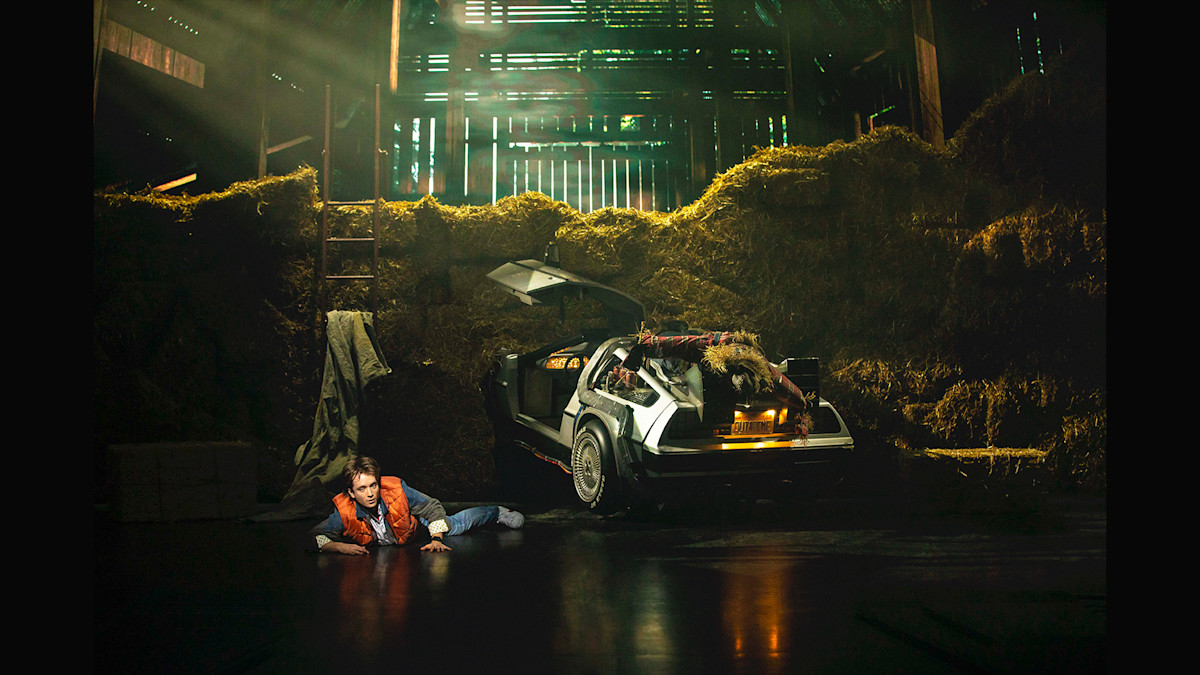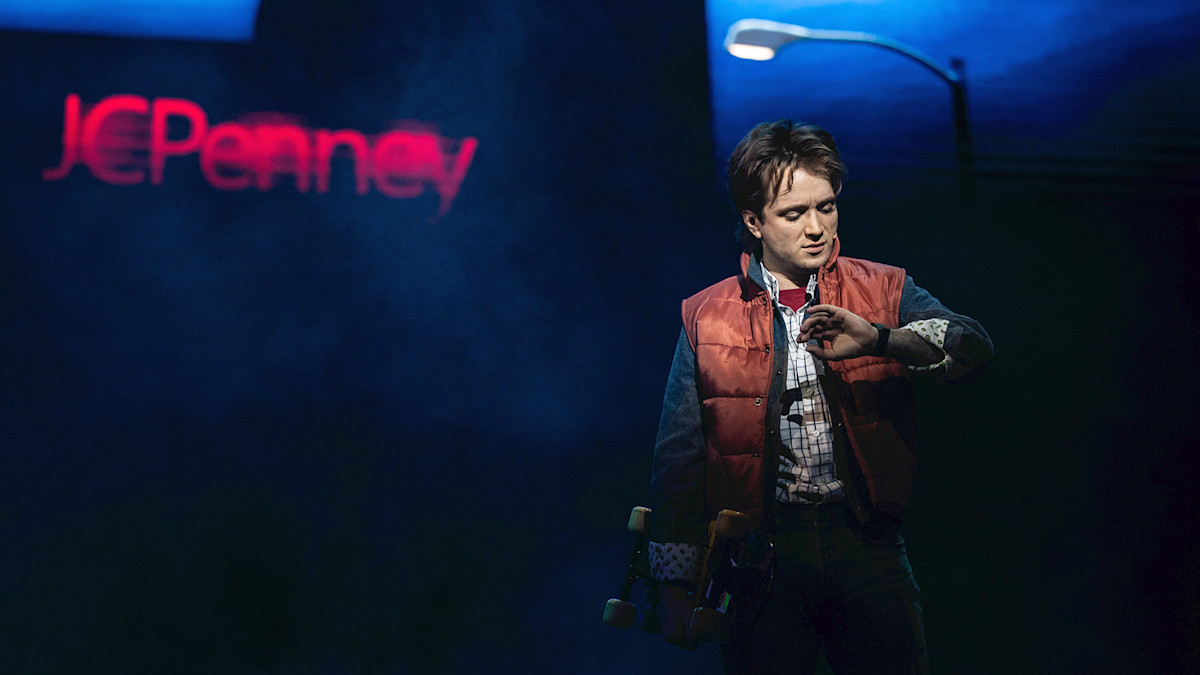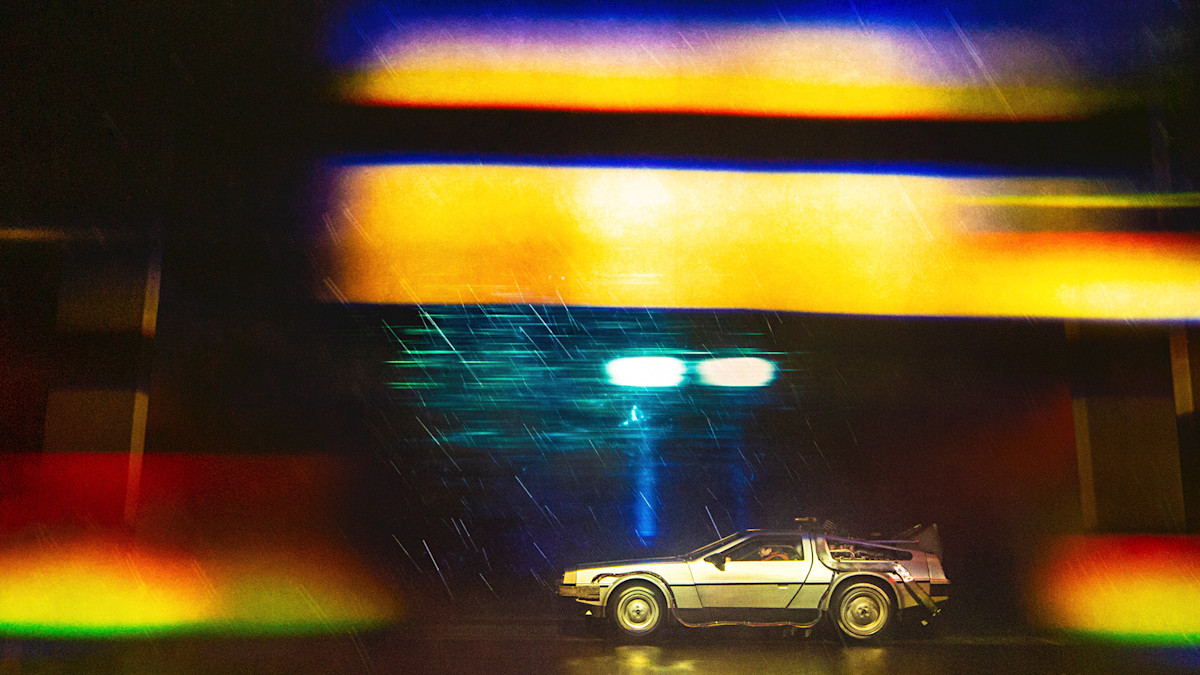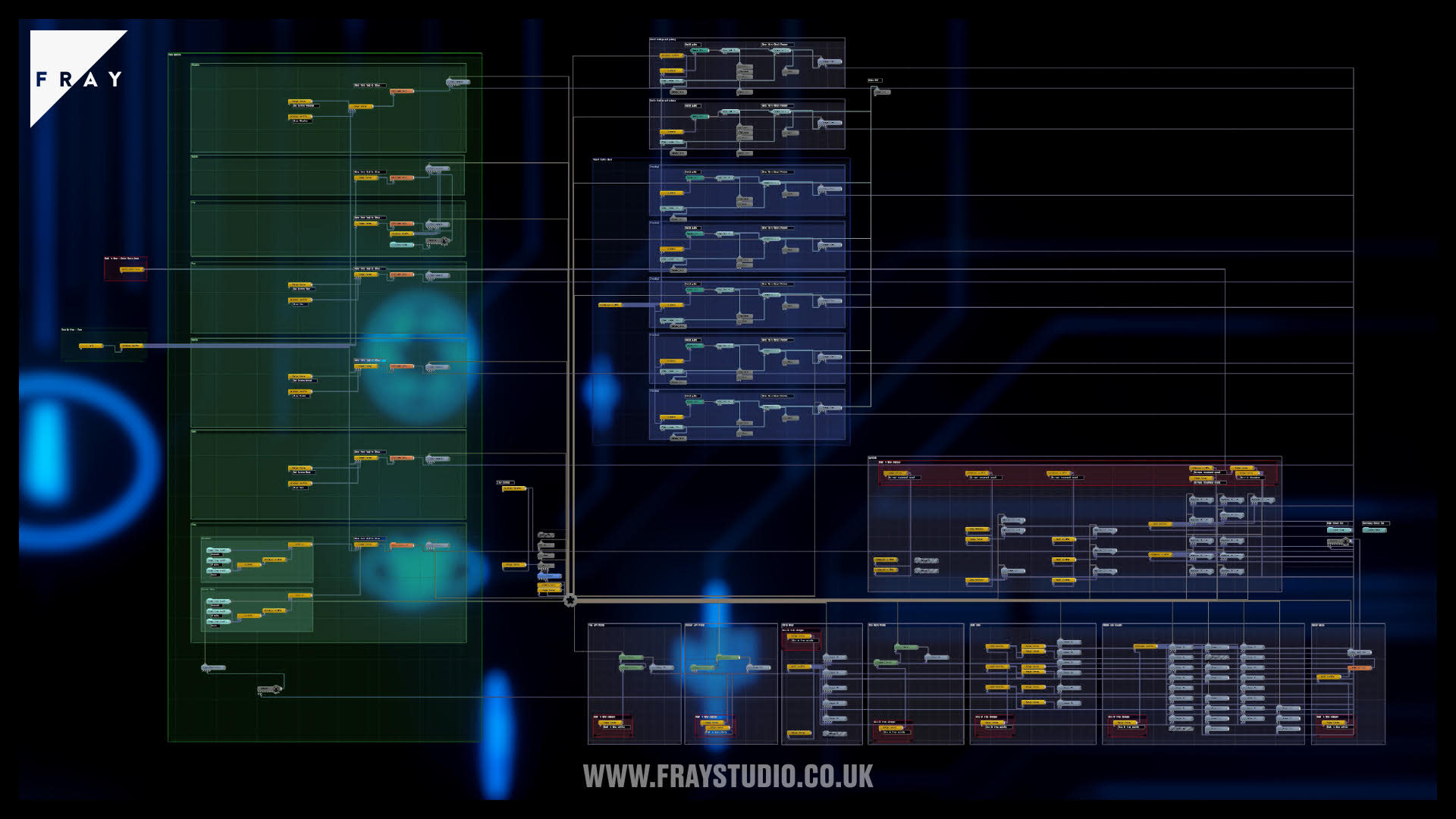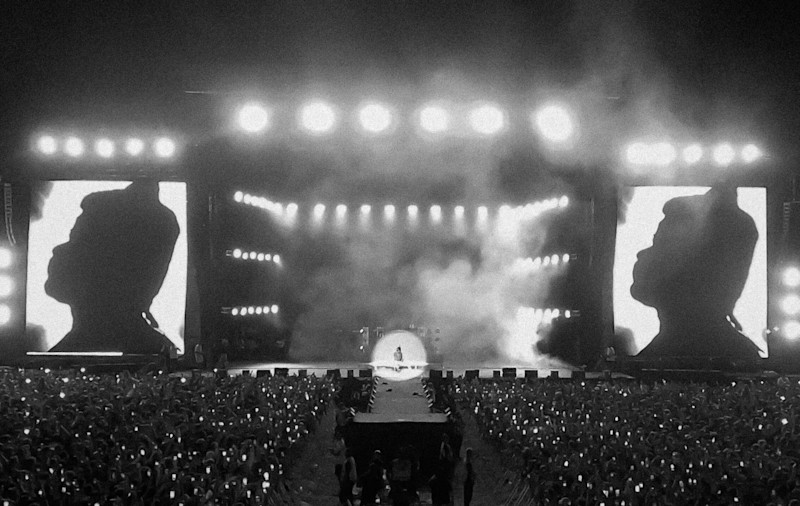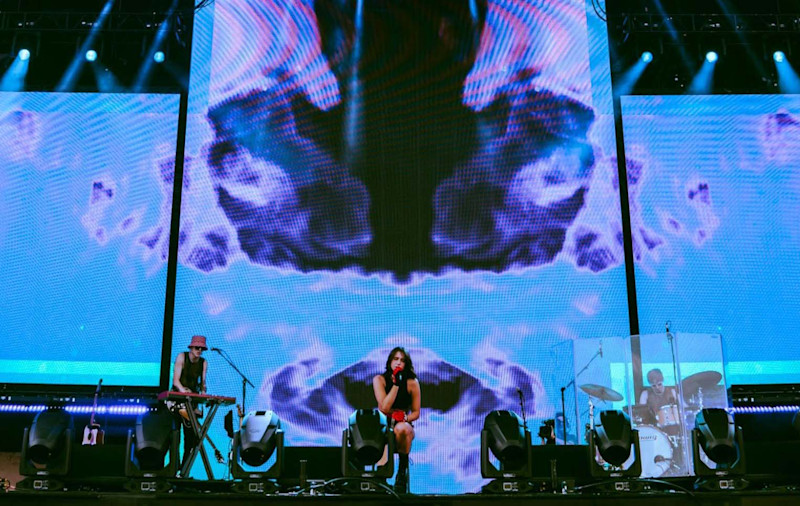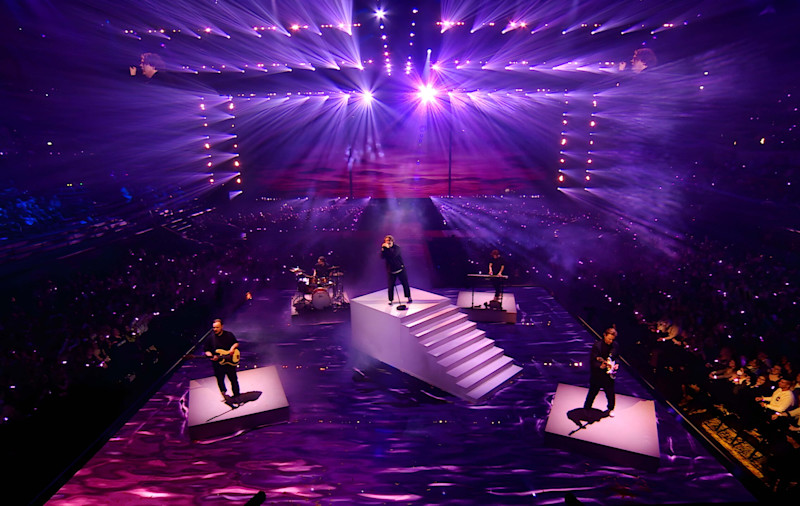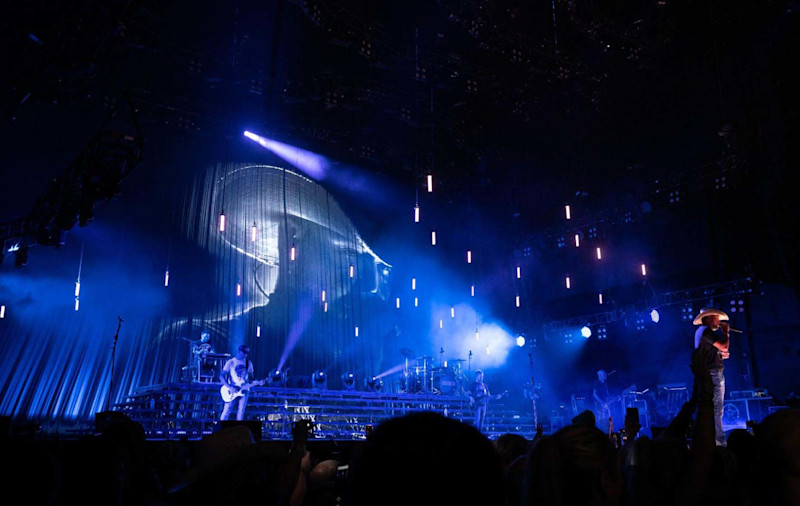Written by the original screenplay writer of the Back to the Future trilogy Bob Gale, alongside co-creator Robert Zemeckis, this cult classic film is perfectly reimagined for the stage. Finn Ross, co-creative director and co-founder of award-winning studio FRAY shares his design story:
“We are FRAY Studio. We have always worked across multiple disciplines, from theatre, exhibitions, opera through to live music and installations. This cross-genre approach allows us to pull different processes from one art form to another.”
Vision
“We came on board very early in the production, which allowed us to develop video design in tandem with the development of the play and the physical set. Transforming a screenplay into a theatrical script was the first challenge the team faced. If we were to follow the screenplay scene for scene, the stage adaptation would have been five hours long.”
“Bob Gale and Robert Zemeckis would try writing the script to make it easier for technical stage design, but that was sucking the energy out of the scenes. It was a collaborative effort between director John Rando, set designer Tim Hatley, the writers and myself to fit that filmic narrative into a theatrical narrative.”
“Our goal was to create a dynamic digital set that fit with the world of Back to the Future, and the physical set design. We approached this by using a foreground, mid-ground and background structure. Video became a piece of the larger composite, rather than a separate element.”
“We decided from the offset that we would design every element of this project in Notch. We were already using Notch for live elements and 3D scenes, we wanted to use Notch on 2D scenes and composited scenes too. The best part of this process is that we barely had to use our render farm. Everything was coming out in real-time, or rendering faster than any other software we use.”

